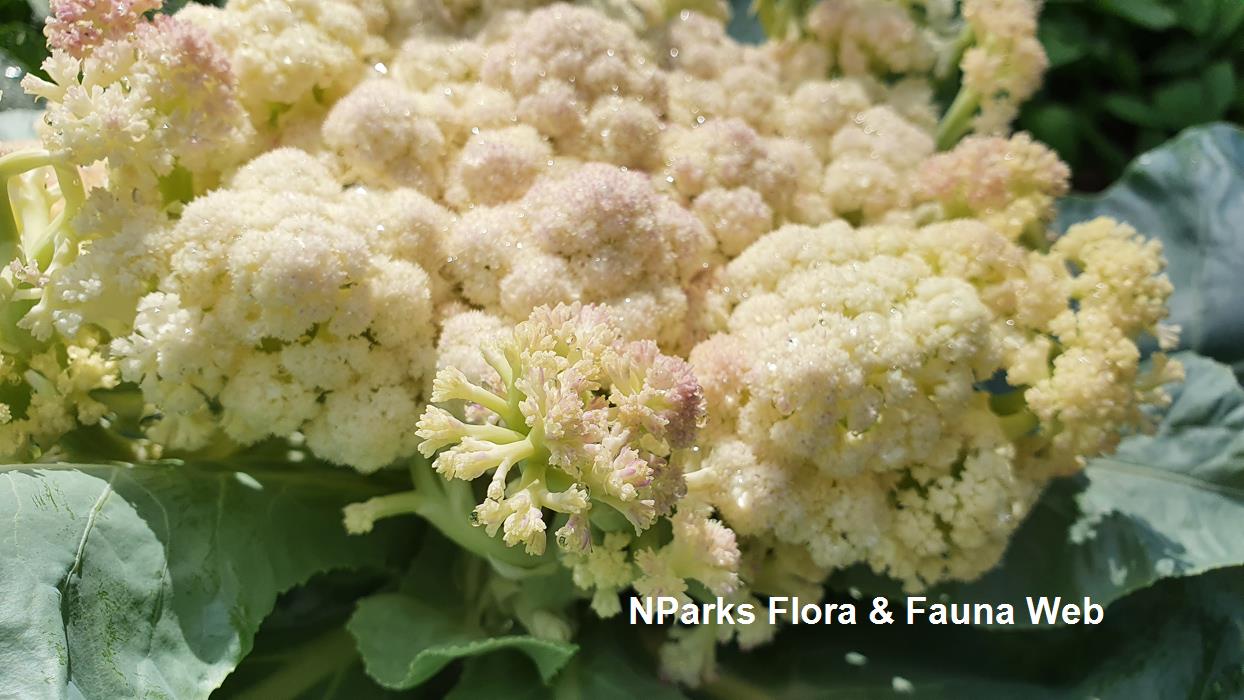
Back
Brassica oleracea Botrytis Group [cauliflower]
| Family Name: | Brassicaceae (Cruciferae) |
| Synonyms: | Brassica cretica convar. botrytis |
| Common Name: | Cauliflower, 花椰菜 |
Name
Classifications and Characteristics
| Plant Division | Angiosperms (Flowering Seed Plants) (Dicotyledon) |
|---|---|
| Plant Growth Form | Herbaceous Plant |
Biogeography
| Native Habitat | Terrestrial |
|---|
Description and Ethnobotany
| Growth Form | Annual herb with a compact growth form. |
|---|---|
| Foliage | Oblong leaves are widely spaced in a rosette. |
| Flowers | Yellow flowers have petals that form a cross-like shape. |
| Cultivation | Although cauliflower is often considered a vegetable suited for temperate climates, it has been grown in tropical areas of Africa, Central America and South America. It is not commonly grown in Singapore, but a heat resistant cultivar has been successfully grown here. It requires a deep soil rich in organic matter. |
| Etymology | The varietal epithet botrytis stems from a Greek word that means a cluster resembling a bunch of grapes. |
| Ethnobotanical Uses | Edible Plant Parts : Edible Flowers Food (Fruit or Vegetable): Flowers and their flower stalks are harvested early in the undeveloped stage. They are consumed raw or cooked in a variety of methods, such as stir-frying, steaming or boiling. They contain Vitamin C (60 mg per 100 g). |
Plant Care and Propagation
| Light Preference | Full Sun |
|---|---|
| Water Preference | Moderate Water |
Floral (Angiosperm)
| Flower Colour(s) | Yellow / Golden |
|---|
Image Repository
Others
| Master ID | 30537 |
|---|---|
| Species ID | 4846 |
| Flora Disclaimer | The information in this website has been compiled from reliable sources, such as reference works on medicinal plants. It is not a substitute for medical advice or treatment and NParks does not purport to provide any medical advice. Readers should always consult his/her physician before using or consuming a plant for medicinal purposes. |





.jpg)

